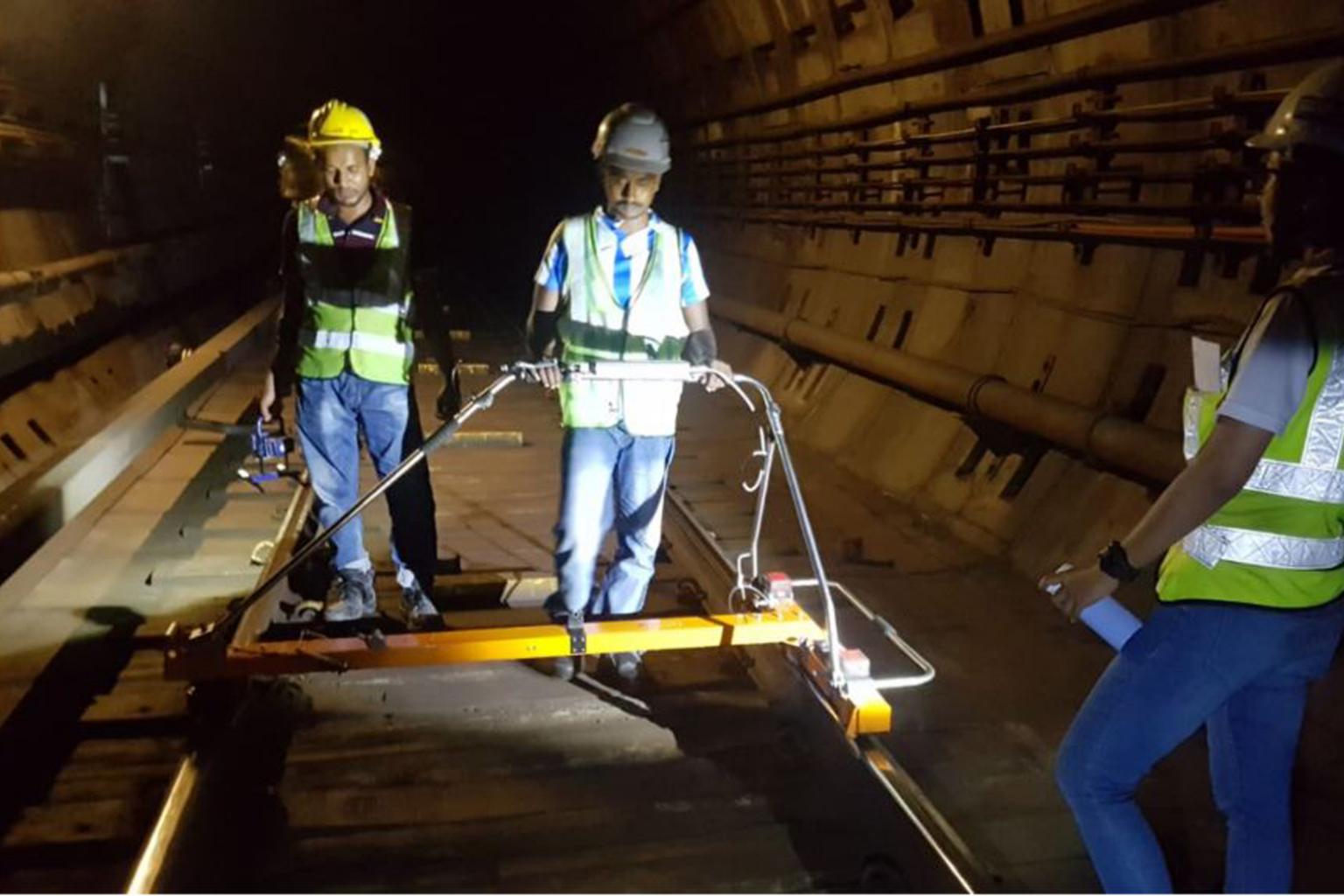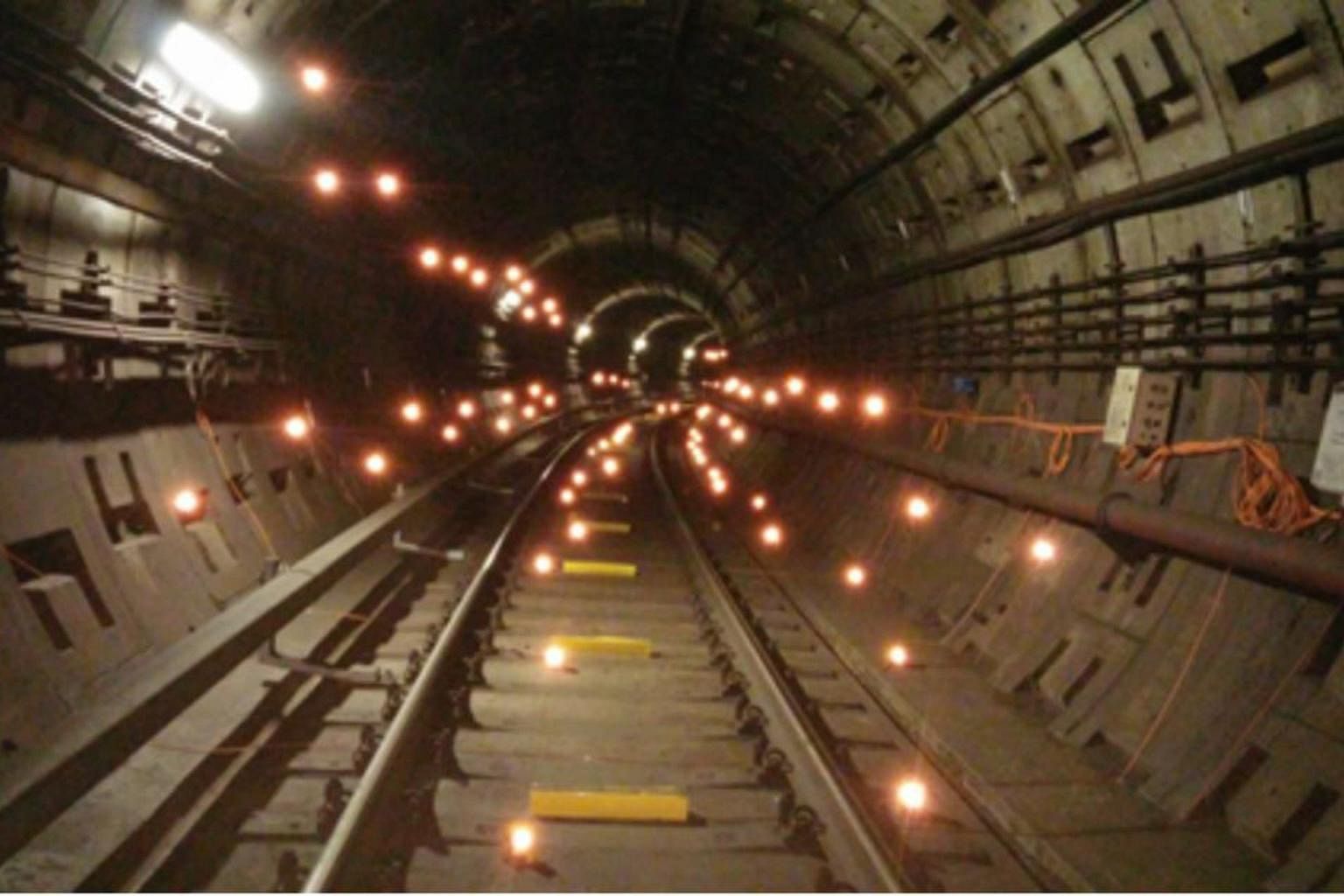Tunnelling for Thomson-East Coast Line completed on schedule
Sign up now: Get ST's newsletters delivered to your inbox

The completion of tunnelling operations marks a major milestone for the 32-station line, which was created on Aug 15, 2014, with the merger of the Thomson Line and Eastern Region Line.
PHOTO: LAND TRANSPORT AUTHORITY
Wong Kai Yi
Follow topic:
SINGAPORE - Tunnelling work for the Thomson-East Coast Line (TEL) has been completed on schedule, with the focus now shifting to building the stations along the line and interior fittings.
The Land Transport Authority (LTA) told The Straits Times that tunnelling had been expected to be completed "by the end of 2019".
The completion of tunnelling operations marks a major milestone for the 32-station line, which was created on Aug 15, 2014 with the merger of the Thomson Line and Eastern Region Line.
Around 32km of the 43km line was built using tunnel boring machines with the remaining 11km constructed using other methods.
"By adopting state of the art techniques and adapting technologies where appropriate, we have safely tunnelled under varied ground and site conditions - from heavily built up areas to localities where there are water bodies and varied soil conditions," said Dr Goh Kok Hun, director of civil design and land at the LTA.
Professor Yong Kwet Yew, the co-chairman of the international panel of advisers for the TEL, said construction faced the same challenging site and ground conditions as the Downtown and Circle Lines.
"On top of these challenges, TEL has more frequent and more intricate over-crossing and under-crossing of existing structures," he said.
Some of the engineering solutions to those challenges, Prof Yong added, were "adapted and improved" from the methods used to overcome "significant" challenges in the construction of the Downtown and Circle Lines.
Real-time monitoring methods were used to detect anomalies during construction to minimise the impact on the environment, the LTA said.

One of the more notable technologies was "ground freezing", which was used for the first time in building an MRT line.
Freezing the water-logged earth formed ice walls and enabled safe tunnelling, the LTA said.
The Woodlands, Caldecott, Stevens, Orchard, Outram Park, Marina Bay and Sungei Bedok stations will be interchanges.
The first stage - comprising Woodlands North, Woodlands and Woodlands South stations - is scheduled to open before Chinese New Year next year, having been pushed back a month.
Stage 2 will open later in 2020 with the remaining stages opening progressively until 2024.
SMRT Trains will operate the line for an initial nine-year period on an Incentives-Disincentives framework piloted by the LTA.
The firm will have its fee pegged to its performance in the key areas of service reliability, customer satisfaction and operations and maintenance processes. It will receive an incentive payment for out-performance, and conversely, have its service fee deducted if it does not meet expectations.

